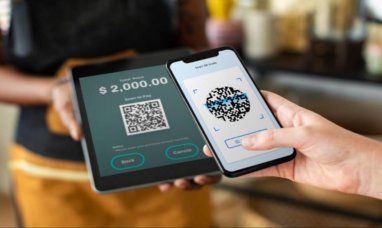I’ve had my accounts with the same organization for 18 years. This means that whenever I consider transferring banks, I experience a small amount of panic. Switching to a new bank is drawn out, challenging, and possibly messy with direct deposits and automatic bill payments. However, it is not necessary to be that way. It’s easy to open a new bank account and change financial institutions. Even though switching banks is slightly different in the modern digital era, you can still do it without being too overwhelmed. Updates to payment information are a lot simpler now that everything is online. Here’s a step-by-step tutorial for changing banks without pulling out your hair.
Selecting a New Bank Account Prudently
This is crucial if you are leaving your old bank for a specific reason. It can be more costly, a negative experience, or other service modifications you don’t like. The majority of the central banks, however, resemble one another. So be sure to do extensive research on any potential new banks.
How is the bank’s standing? Are there any nearby branches? Do you have a particular feature in mind? Are ATM withdrawals at no cost possible? What causes certain ATMs to be out of service? As an illustration, Charles Schwab Bank pays its clients’ out-of-network ATM fees. You could save a lot of money if you choose them. They don’t have many physical branches, on the other hand. They might not be what you’re searching for if you prefer doing your banking in person.
Additionally, Bank of America pays a part of out-of-network ATM fees. Unfortunately, to receive the benefit, you must have assets valued at at least $60,000 held by the institution. Nevertheless, some of the folks I know are eligible if they have funds in their Merrill Edge investing account. At least you won’t need to maintain a sizable balance in your savings or checking account to be eligible. However, not everyone can maintain six figures in liquid assets (even in investments). Because of this, it’s crucial to investigate your banking options before switching.
Before Closing Your Current Account, Create a New One
You’ll need to allow some time for overlap across your various bank accounts. After all, you want to ensure that every transaction you make will succeed. If you close your previous account before opening a new one, there can be a problem. You could miss a payment or have a deposit go into an inactive account. In case you forget to stop an automatic payment, keeping a buffer in your old account is a good idea.
Don’t forget to bring the following things when you open a new bank account:
Photo identification (a driver’s license or passport)
Your Social Security number
The amount of your opening deposit
To avoid paying a monthly charge to maintain your account, ensure you have enough money for your initial deposit to meet the bank’s minimum. If you cannot, you should search for a different bank that doesn’t charge you any fees.
Make Sure To Transfer Your Automated Payments
The challenging element may be this. You might not be able to recall the names of all the service providers to whom you make automatic payments. It’s pretty simple to overlook something.
Make a note of all the different service providers that you automatically pay before you make the transfer. To make sure you haven’t missed anything, go online and search the past three months’ worth of transactions in your former bank account. You may add up all the services you pay for every quarter using this. Once you’ve made a list, stop paying any upcoming bills to each service provider.
If you pay estimated taxes quarterly, be aware that your EFTPS.gov account is linked to your bank account. Once you have your new banking information, you must reapply for a new account. When it comes to taxes, you should also verify with your state. Check to see if you can simply change your banking information or if you also need to submit a new account application with them.
It’s a good idea to schedule a month or two of manual bill payments (by mail or online). The last thing you want is a blemish on your credit report due to a forgotten bill payment. You can reactivate the auto-pay feature for those invoices after you’re confident that everything has been accurately transferred to your new account.
Don’t forget to speak with your company’s HR department as a final step. They will also want your new banking details if you receive your pay via direct deposit. How long it will take for the switch to take effect should be something they can tell you. This is another crucial justification for holding onto your previous account until you are sure your hard-earned money is going where it should.
Don’t Delete Your Old Account Just Yet
You should expect specific difficulties when transferring money from one account to another. To cover any errors, it’s wise to keep your old account active (and at least half-paid) for a few months.
For instance, there are currently too many demands for the federal government to handle. Perhaps the time has come to submit the estimated taxes for the upcoming quarter. The taxes are still owed if you haven’t set up your new banking details. You’ll be relieved that you can utilize your previous account to please Uncle Same.
Close your account in person when you do decide to do so. Be careful to ask for closure documentation, so you have it for your files. This will be useful if there is a future issue regarding the former account. If any monies are left over, I would electronically transfer them to the new bank first. You may ask for it in cash or as a cashier’s check.
Lastly, be careful to destroy any unused cheques and debit cards connected to that account. Give no opportunity for any unscrupulous person to attempt fraud on your behalf.
The Conclusion
Making the switch to a new bank could be a hassle. It need not be expensive or complicated, though. It’s probably time to start looking for a new bank if your current one charges you any fees. Keep in mind that banks are constantly bidding for your business. When you fulfill specific requirements, many of them provide signup incentives. Free money or technological items have been offered in exchange for switching banks. Make sure you read the fine print regarding the specific requirements for the freebies if you’re seeking to take advantage of one of those deals.
Given how competitive the banking industry is, most big banks will gladly assist you in making a transition. Many people will put in as much necessary labor as they can. Sometimes, they’ll even close your previous account. But ultimately, it’s your responsibility to ensure that all your information is correct and current. Do your share to ensure that the changeover goes as smoothly as possible.
Featured Image: Pexels @ RODNAE Productions






